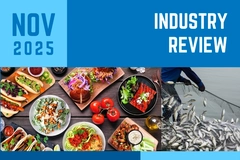
- Industry news
Industry news
- Category news
Category news
- Reports
- Key trends
- Multimedia
Multimedia
- Journal
- Events
- Suppliers
Suppliers
- Home
- Industry news
Industry news
- Category news
Category news
- Reports
- Key trends
- Multimedia
Multimedia
- Events
- Suppliers
Suppliers
Repurposing discarded dough: Cultivating microbial starters with wasted bread for industrial bakeries

02 Mar 2020 --- Bread waste destined for dumpsters can be used as a medium for cultivating microbial starters for the food industry. Likewise, repurposing the discarded dough from bread production can feed the microorganisms needed to set up fermentation in food industries such as bakeries, dairy and wine-making, found a new study from the University of Bari Aldo Moro, Italy. Bread loss is preventable at several stages throughout the supply chain and considerably contributed to worldwide food waste. Meanwhile, innovative bioprocessing technologies may be the key to unraveling the burden of food waste, the study further highlights.

“Small bakeries, which represent a big portion of the market, do not use microbial starters. Most of the time, they have sourdoughs passed on for generations and for them, it would be easier to dispose of their surplus. That is why this research presents an opportunity to establish new business opportunities and cooperation among all the players in the supply chain,” the study’s first author Michela Verni, PhD student at University of Bari Aldo Moro, shares with FoodIngredientsFirst.
The goal of the study was to create a wasted bread medium (WBM) that would match or beat current bread production methods that rely on raw materials. Verni and her colleagues experimented with more than 40 different kinds of growing conditions to find the best combination for various bacteria, yeast and other microorganisms used in food fermentation. They discovered a selected formulation that uses 50 percent waste bread that was appetizing to a wide variety of microorganisms, including bacteria used in yogurt production and wine-making. Crucially, they estimate that the production cost of WBM is about a third of conventional ingredients.
 The study presents an opportunity to establish new business opportunities throughout the bakery supply chain.“The process is straightforward. Just like for the human body, water, carbohydrates and proteins are the main sources necessary to microbial life and bread already contains starch and proteins. To get to the final medium, we only need to add water, food-grade enzymes to breakdown the big molecules into ready-to-use compounds, and few more supplements to be sure there is a balanced ratio between all the components,” Verni explains.
The study presents an opportunity to establish new business opportunities throughout the bakery supply chain.“The process is straightforward. Just like for the human body, water, carbohydrates and proteins are the main sources necessary to microbial life and bread already contains starch and proteins. To get to the final medium, we only need to add water, food-grade enzymes to breakdown the big molecules into ready-to-use compounds, and few more supplements to be sure there is a balanced ratio between all the components,” Verni explains.
Theory meets practice
The strength of this study’s technology relies on its simplicity, the research team’s coordinator Dr. Carlo Rizzello, also tells FoodIngredientsFirst. “Any industrial bakery using starters for their sourdough could use their own waste to produce the medium and propagate the cultures, without modifying or adding any equipment to the existing technology. The fact that the process is already scaled up at industrial level proves its feasibility,” he highlights.
The protocol is easily applicable to industry, especially for bakery giants with the means and the strongest motives to implement the protocol, Verni adds. “Moreover, this research also bears certain implications for both the food supplements and cosmetic industries, given that WBM applications are wider than that of simple microbial cultivation.” Indeed, the study’s WBM appears to be an effective medium for growing lactic acid bacteria and yeasts.
While the study’s protocols may be easily applicable, the hardest part of the research was optimizing the protocol itself, Dr. Rizzello affirms. “Bread alone does not contain all the necessary compounds required for microbial growth. For example, lactic acid bacteria growth is not comparable to that of the reference medium. Therefore, finding the right combination of enzymes or supplements added and processing conditions was a really demanding step.”
He explains that during the research, the team found themselves at a crossroads, tasked with staying on target to recycle bread waste while still producing a feasible medium. “We settled for a compromise. We did not choose the best-performing medium, but the one that combined a decent growth of several types of starters and at the same time was not expensive to produce,” Dr. Rizzello explains.
 Bread waste takes its toll on both the economy and the environment.“Depending on the starters used, the medium might need few changes. Some microorganisms, even within the same genus, have different requirements, which means they grow better in the presence of specific substances. But this is not an insurmountable obstacle, WBM formulation could be easily adapted to fit their growth,” he notes.
Bread waste takes its toll on both the economy and the environment.“Depending on the starters used, the medium might need few changes. Some microorganisms, even within the same genus, have different requirements, which means they grow better in the presence of specific substances. But this is not an insurmountable obstacle, WBM formulation could be easily adapted to fit their growth,” he notes.
Impacting both economy and environment
The authors write that bread waste creates both economic loss and environmental impacts, as most of the waste ends up in landfills that emit greenhouse gases, such as carbon dioxide and methane. They identify the main reasons for this as bread’s susceptibility to staling and spoiling, limited shelf-life, substandard products, processing factors, and even consumer requests. “For example, crusts and external layers are removed from loaves in sandwich bread production – up to 40 percent of the products,” the study reads.
“The need for sustainable food productions led the scientific community to exploit more efficient ways of utilizing waste from food processing. WBM represents a realistic option for the valorization of bread waste as a response to the modern vision of circular economy,” the study concludes.
By Anni Schleicher











